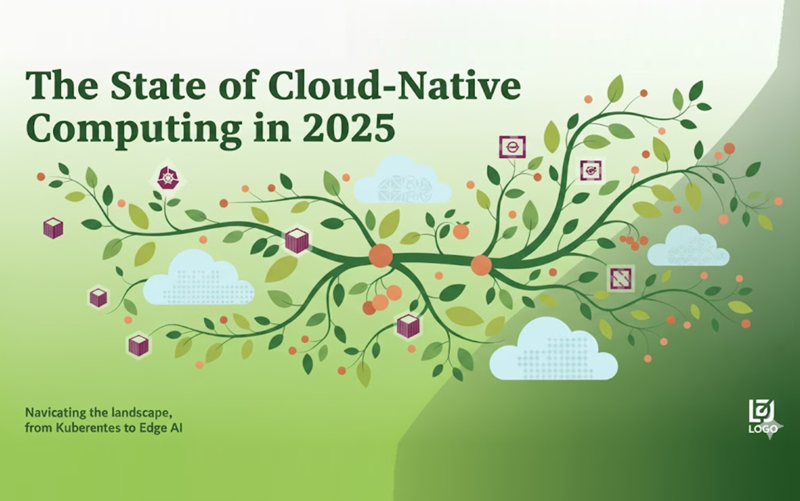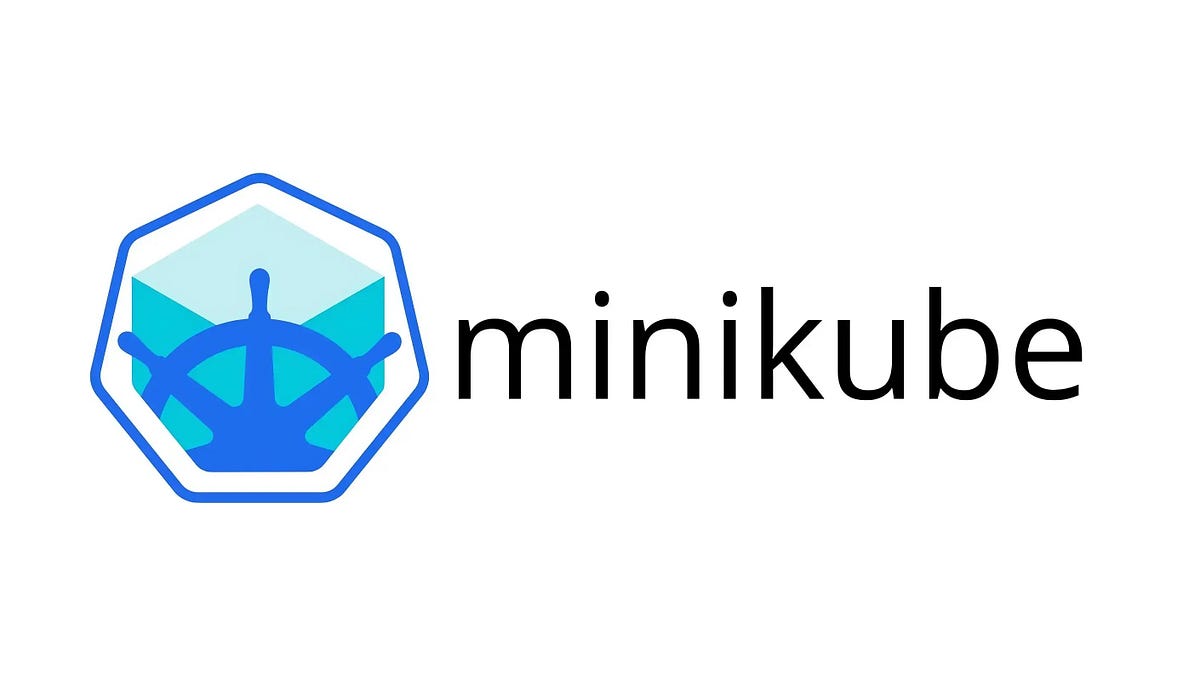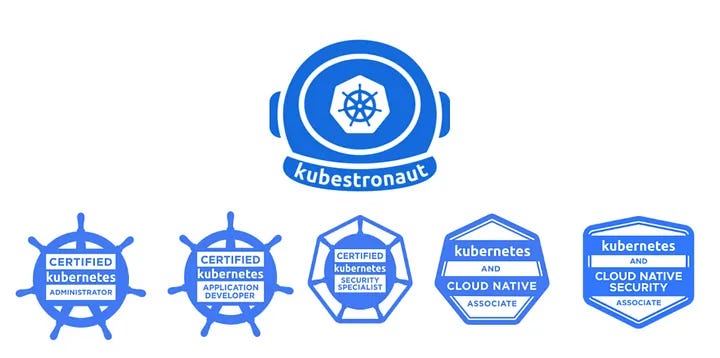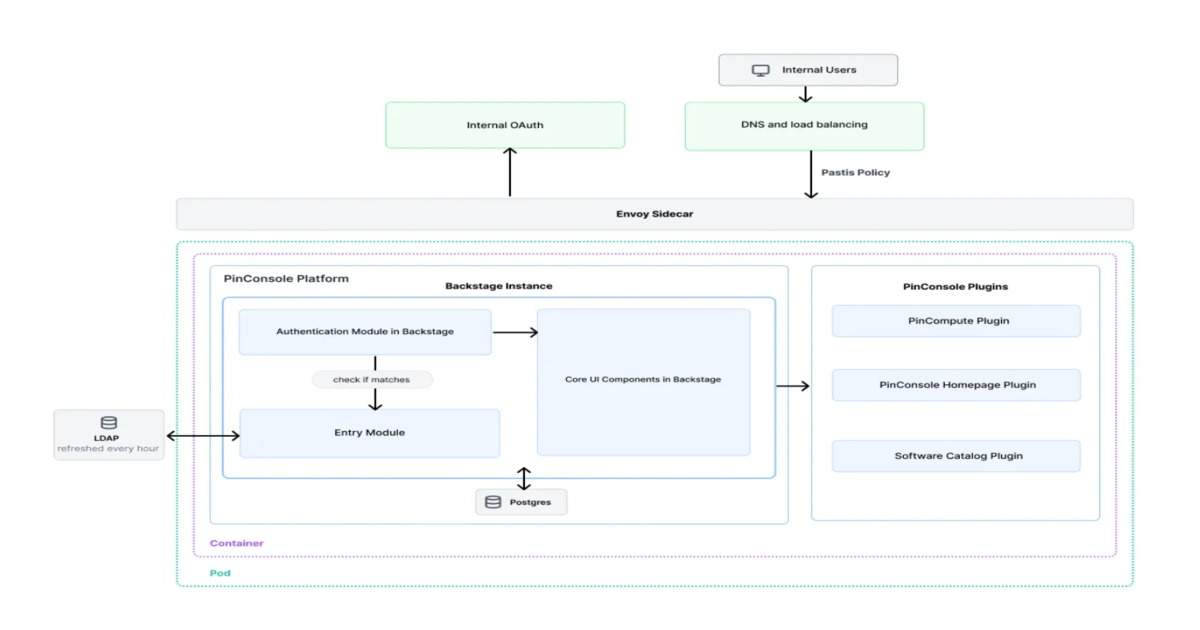#kubernetes
#kubernetes
[ follow ]
#devops #cloud-native #observability #platform-engineering #security #pod-startup #kubelet #docker #cicd
fromThe Hacker News
1 week agoWebinar: How Attackers Exploit Cloud Misconfigurations Across AWS, AI Models, and Kubernetes
AWS Identity Misconfigurations: We will show how attackers abuse simple setup errors in AWS identities to gain initial access without stealing a single password. Hiding in AI Models: You will see how adversaries mask malicious files in production by mimicking the naming structures of your legitimate AI models. Risky Kubernetes Permissions: We will examine "overprivileged entities"-containers that have too much power-and how attackers exploit them to take over infrastructure.
Information security
fromInfoQ
1 week agoGoogle Cloud Demonstrates Massive Kubernetes Scale with 130,000-Node GKE Cluster
The feat was achieved by re-architecting key components of Kubernetes' control plane and storage backend, replacing the traditional etcd data store with a custom Spanner-based system that can support massive scale, and optimizing cluster APIs and scheduling logic to reduce load from constant node and pod updates. The engineering team also introduced new tooling for automated, parallelized node pool provisioning and faster resizing, helping overcome typical bottlenecks that would hinder responsiveness at such a scale.
DevOps
fromInfoQ
2 weeks agoNVIDIA Dynamo Addresses Multi-Node LLM Inference Challenges
This challenge is sparking innovations in the inference stack. That's where Dynamo comes in. Dynamo is an open-source framework for distributed inference. It manages execution across GPUs and nodes. It breaks inference into phases, like prefill and decode. It also separates memory-bound and compute-bound tasks. Plus, it dynamically manages GPU resources to boost usage and keep latency low. Dynamo allows infrastructure teams to scale inference capacity responsively, handling demand spikes without permanently overprovisioning expensive GPU resources.
Artificial intelligence
fromInfoQ
2 weeks agoHow Discord Scaled Its ML Platform from Single-GPU Workflows to a Shared Ray Cluster
Discord has detailed how it rebuilt its machine learning platform after hitting the limits of single-GPU training. By standardising on Ray and Kubernetes, introducing a one-command cluster CLI, and automating workflows through Dagster and KubeRay, the company turned distributed training into a routine operation. The changes enabled daily retrains for large models and contributed to a 200% uplift in a key ads ranking metric. Similar engineering reports are emerging from companies such as Uber, Pinterest, and Spotify as bespoke models grow in size and frequency.
Artificial intelligence
fromInfoQ
2 weeks agoDocker Releases Desktop 4.50, Adds Free Debugging Tools and AI-Native Enhancements
Docker recently announced the release of Docker Desktop 4.50, marking another update for developers seeking faster, more secure workflows and expanded AI-integration capabilities. The release introduces a free version of Docker Debug for all users, deeper IDE integration (including VSCode and Cursor), improved multi-service to Kubernetes conversion support, new enterprise-grade governance controls, and early support for Model Context Protocol (MCP) tooling.
DevOps
Artificial intelligence
fromInfoQ
3 weeks agoKubeCon NA 2025 - Robert Nishihara on Open Source AI Compute with Kubernetes, Ray, PyTorch, and vLLM
Kubernetes, PyTorch, vLLM, and Ray enable scalable production AI by handling growing compute and multimodal data demands across data processing, training, and serving.
Artificial intelligence
fromInfoQ
3 weeks agoBuoyant Announces MCP Support for Linkerd, Extending Service Mesh Capabilities to Agentic AI Traffic
Linkerd natively manages, secures, and observes MCP-driven agentic AI traffic in Kubernetes, offering visibility, access control, and traffic shaping for enterprises.
Artificial intelligence
fromInfoQ
1 month agoKubeCon NA 2025 - Erica Hughberg and Alexa Griffith on Tools for the Age of GenAI
GenAI platforms require AI-native routing, token-level rate limiting, centralized credential management, and observability, resilience, and failover enabled by Kubernetes-based tools.
fromZDNET
1 month agoKubernetes, cloud-native computing's engine, is getting turbocharged for AI
A safe, universal platform for AI workloads CKACP's goal is to create community-defined, open standards for consistently and reliably running AI workloads across different Kubernetes environments. Also: Why even a US tech giant is launching 'sovereign support' for Europe now CNCF CTO Chris Aniszczyk said, "This conformance program will create shared criteria to ensure AI workloads behave predictably across environments. It builds on the same successful community-driven process we've used with Kubernetes to help bring consistency across over 100-plus Kubernetes systems as AI adoption scales."
Artificial intelligence
Artificial intelligence
fromInfoQ
1 month agoKubeCon NA 2025 - Salesforce's Approach to Self-Healing Using AIOps and Agentic AI
AIOps and agentic AI enable autonomous Kubernetes cluster health analysis, automated diagnosis, and orchestrated remediation to reduce mean time to identify and resolve issues.
fromTechzine Global
1 month agoGoogle introduces Agent Sandbox for Kubernetes
Google is launching Agent Sandbox, a new Kubernetes primitive built for AI agents. The technology provides kernel-level isolation and can run thousands of sandboxes in parallel. Google built Agent Sandbox as an open-source project within the Cloud Native Computing Foundation. The technology is based on gVisor, with additional support for Kata Containers. This provides kernel-level isolation that counteracts vulnerabilities. Each agent task is assigned its own isolated sandbox.
DevOps
fromInfoQ
1 month agoCNCF Highlights How vCluster Eases Kubernetes Multi-Tenancy Challenges
The Cloud Native Computing Foundation (CNCF) published a blog post discussing how vCluster, an open-source project by Loft Labs, addresses key multi-tenancy obstacles in Kubernetes clusters by enabling "virtual clusters" within a single host cluster. This approach enables multiple tenants to have isolated control planes while sharing underlying compute resources, thereby reducing overhead without compromising isolation. Traditional namespace-based isolation in Kubernetes often falls short when tenants need to deploy cluster-scoped resources like custom resource definitions (CRDs)
DevOps
fromInfoQ
1 month agoAirbnb's Mussel V2: Next-Gen Key Value Storage to Unify Streaming and Bulk Ingestion
Airbnb's engineering team has rolled out Mussel v2, a complete rearchitecture of its internal key value engine designed to unify streaming and bulk ingestion while simplifying operations and scaling to larger workloads. The new system reportedly sustains over 100,000 streaming writes per second, supports tables exceeding 100 terabytes with p99 read latencies under 25 milliseconds, and ingests tens of terabytes in bulk workloads, allowing caller teams to focus on product innovation rather than managing data pipelines.
DevOps
fromInfoQ
2 months agoTalos Linux: Bringing Immutability and Security to Kubernetes Operations
Sidero Labs has been developing Talos Linux, an immutable operating system purpose-built exclusively for running Kubernetes, alongside Omni, a cluster lifecycle management platform. InfoQ met the Sidero team in Amsterdam during the TalosCon 2025 and had conversations about their approach to simplifying Kubernetes operations through minimalism and security-first design. The concept for Talos emerged from practical frustrations with traditional operating systems in enterprise environments.
DevOps
fromBusiness Matters
2 months agoLeo Snetsinger on DevOps, Shrimp Farming, and Solving Problems
But Leo's expertise doesn't stop at tech. He also founded Homeland Shrimp, an indoor aquaculture business he engineered himself. His self-heating, closed-loop system is a blend of thermodynamics, automation, and sustainable thinking-designed to raise Pacific white shrimp efficiently and responsibly. Leo volunteers locally, helping seniors with yard care through a Sherburne County initiative. He also supports causes like Imagine Farm, which promote sustainable agriculture.
DevOps
Information security
fromfaun.pub
2 months agoFrom Jenkins to GitHub Actions: Evolving a Secure DevSecOps Pipeline with Canary Deployments
Migrate CI to GitHub Actions, strengthen security and secrets management, adopt canary progressive delivery, and expose applications via NGINX Ingress for scalable DevSecOps pipelines.
fromInfoWorld
3 months agoSmoother Kubernetes sailing with AKS Automatic
Kubernetes is the default platform for cloud-native applications, but managing Kubernetes at scale isn't trivial. New tools like Headlamp aim to reduce the overhead that comes with managing and deploying Kubernetes applications, but it is still easy to make mistakes and cause significant downtime. A recent survey from Komodor of enterprise Kubernetes usage showed that 79% of incidents in running environments are caused by system changes. On top of that, these outages take close to an hour to detect and resolve.
Software development
Information security
fromThe Hacker News
3 months agoChaos Mesh Critical GraphQL Flaws Enable RCE and Full Kubernetes Cluster Takeover
Multiple critical Chaos Mesh vulnerabilities allow minimal in-cluster attackers to execute commands, disrupt services, steal tokens, and potentially achieve cluster-wide takeover.
fromInfoQ
3 months agoAmazon EKS Enables Ultra-Scale AI/ML Workloads with Support for 100K Nodes per Cluster
Amazon Web Services has announced a significant breakthrough in container orchestration with Amazon Elastic Kubernetes Service (EKS) now supporting clusters with up to 100,000 nodes, a 10x increase from previous limits. This enhancement enables unprecedented scale for artificial intelligence and machine learning workloads, potentially supporting up to 1.6 million AWS Trainium chips or 800,000 NVIDIA GPUs in a single Kubernetes cluster.
Artificial intelligence
fromInfoQ
3 months agoCNCF Incubates OpenYurt for Kubernetes at the Edge
For OpenYurt, Kubernetes at the edge means running workloads outside centralised data centres at locations like branch offices or IoT sites. This helps reduce latency, improve reliability when connectivity is limited, and enable tasks such as analytics, machine learning, and device management, all while maintaining consistency with upstream Kubernetes. As the CNCF notes in its Cloud Strategies and Edge Computing blog, deploying compute resources closer to the network edge can deliver high-speed connectivity, lower latency, and enhanced security.
Tech industry
Software development
fromInfoQ
3 months agoCrossplane Tackles Applications Alongside Cloud Infrastructure with v2.0 Release
Crossplane 2.0 expands from cloud infrastructure management to unified application and infrastructure orchestration, enabling namespaced composites to deploy applications and resources via Kubernetes manifests.
fromInfoWorld
3 months agoBroadcom and Canonical expand partnership, promising accelerated innovation
"Canonical is the number-one Cloud OS provider in the market with the Ubuntu containers, and VMware by Broadcom, with our VCF Foundation, is the number-one private cloud platform," said Prashanth Shenoy, VP of product marketing, VMware Cloud Foundation (VCF) division of Broadcom, during a media briefing. "So those two organizations coming together really helps our customers build Kubernetes-based modern applications."
Software development
Node JS
fromMedium
9 months agoIntroducing Harmony: Unified JavaScript Platform for Building Composable Frontends and Backends
Bit Harmony is a lightweight NodeJS framework that enables building modular, reusable frontend and backend Aspects for composable full-stack applications with scalable deployment.
fromTechzine Global
3 months agoNutanix CTO reveals multi-cloud strategy and VMware alternative
The real value in multi-cloud operations lies in providing consistent operations across AWS, Azure, and Google Cloud Platform. "If I want to run something in Google and I want to run something in Amazon, if I have to learn new ways of doing things... it becomes more complex for the enterprise," he explained. Nutanix enables organizations to maintain the same operational model across all cloud environments, reducing training requirements and operational complexity.
Tech industry
Tech industry
fromHackernoon
2 years agoHow I Cut AWS Compute Costs by 70% with a Multi-Arch EKS Cluster and Karpenter | HackerNoon
Karpenter significantly improved node provisioning, cutting compute costs by 70% and reducing scaling times.
Transitioning from traditional cluster autoscaling to Karpenter addressed over-provisioning and latency issues.
fromHackernoon
3 years agoMariaDB Kubernetes Operator 25.08.0 Adds AI Vector Support and Disaster Recovery Enhancements | HackerNoon
The introduction of PhysicalBackup Custom Resources provides an efficient backup solution, particularly for large datasets, utilizing mariadb-backup and Kubernetes-native VolumeSnapshots.
Software development
fromMedium
4 months agoKubernetes Weekly #486: GitOps w/ Natural Language, Post-Quantum Cryptography in K8s & Scaling...
Edge computing is evolving into a battleground where speed must be balanced with stringent security demands, exemplified by enterprises like Chick-fil-A leveraging Kubernetes for efficiency.
DevOps
fromAmazon Web Services
5 months agoGitOps continuous delivery with ArgoCD and EKS using natural language | Amazon Web Services
ArgoCD's UI and CLI are designed for users with extensive technical background, which limits access to GitOps workflows for less technical stakeholders. This increases reliance on DevOps engineers.
Web frameworks
fromMedium
5 months agoProgramming Weekly #485: The Hunt for a Perfect Laptop, Best AIs For Job Seekers & Using a Foot...
AI tools are transforming the interviewing process for job seekers, implementing efficiency through advances in technology and enhancing candidate experiences during recruitment.
Artificial intelligence
fromDevOps.com
5 months agoWhy Your Deployments Fail: A Deep Dive Into Misconfigured Pipelines - DevOps.com
One of the most frequent causes of failed deployments is an incorrect Kubernetes manifest. A typo in the YAML or a wrong API version can mean kubectl apply never succeeds or creates broken resources.
DevOps
[ Load more ]


















